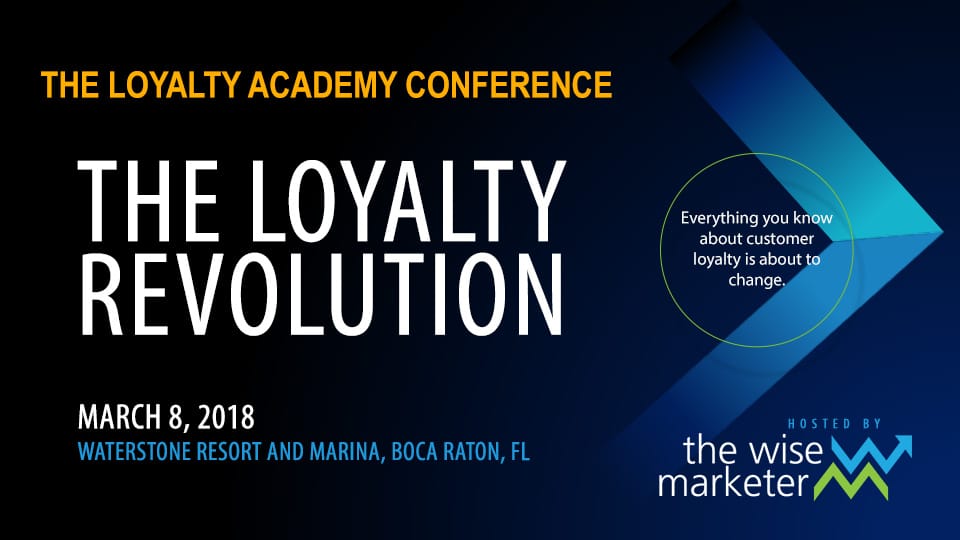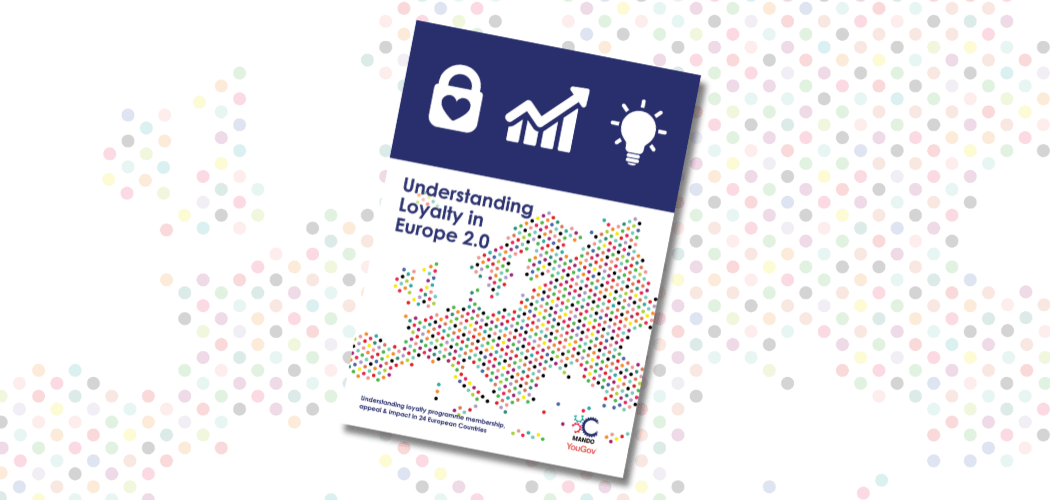On March 8, 2018, the Wise Marketer will host its third annual Loyalty Academy Conference in South Florida. The theme of this year’s conference: “Welcome to the Loyalty Revolution.” Nearly 40 years ago, the first frequent-flyer program began a marketing revolution; today, changing demographics, mobile devices, and new technologies are at the vanguard of a second loyalty revolution, one that will see the very concept of rewarding and recognizing best customers undergo a profound paradigm shift. To set the table for this year’s conference, Wise Marketer Editor in Chief Rick Ferguson begins an article series documenting some of these dramatic changes. In Part I, he looks at the rise of “contextual loyalty.”
By Rick Ferguson
Disruption has impacted the payments industry to such a dramatic degree that the very notion of a customer carefully shopping around, interacting with various stores and brands, and then eventually making a purchase at a point-of-sale has become as antiquated as the compact disk. Today, payments innovation is all about removing friction from the buying process so that customers can make a purchase the very instant they perceive a need. This new frictionless payments ecosystem has given rise to the term “contextual commerce.” To keep pace, the loyalty industry will likewise need to evolve toward a new paradigm of recognition and reward. Call it “contextual loyalty.”
Typical of the conversation around contextual commerce is this definition, courtesy of Banking Exchange contributor Steve Cocheo
“Any step between the customer’s decision to buy and the actual purchase represents friction—and the potential for the sale not to happen. Understanding this in an internet and mobile context is the beginning of understanding “contextual commerce.” Contextual commerce involves bringing need, means of meeting the need, and payment for that means together nearly simultaneously. The actual delivery of the needed item might not happen instantly, in the case of physical goods, but faster and faster delivery brings that closer too.”
The twin foundational pillars of this new paradigm are the mobile device—which has taken commerce out of the store and made it available anywhere a consumer happens to be; and Amazon—which has removed so much friction from commerce that it has nearly, and single-handedly, changed the retail game. As an example, Cocheo quotes Amazon Pay VP Patrick Gauthier, speaking at the Money 20/20 conference:
“Being able to buy and pay for desired goods and services and experiences in the moment is coming to be standard operating procedure… Patrick Gauthier, vice-president of Amazon Pay, said that ‘consumers now expect there will be access to a broad range of information and product offerings—and a frictionless experience if they want to buy something. And they expect to be allowed to connect across multiple functions.’ Gauthier spoke of the Dash Buttons that Amazon provides for ordering various goods, such as laundry detergent, right near the need. ‘You want to be in the moment when the consumer has a decision to make,’ he said, ‘and remove the friction of making their purchase at the right moment.’”
While Gauthier may have a vested interest in promoting Amazon’s Dash button as an example of contextual commerce, Cocheo is certainly correct in highlighting it as an example of where commerce is headed. As another panelist mentioned in the same Money 20/20 session, at some point the washing machine will order the laundry detergent on its own, without your input. In many cases, commerce will become so frictionless that it won’t require conscious effort.
To keep pace with contextual commerce, loyalty marketers too will need to evolve the concept of the “loyalty program” beyond earning rewards only at the point of purchase, receiving communications only via email according to the operator’s schedule, and recognizing best customers only at specific touch points or via undifferentiated benefits. The new loyalty paradigm means recognizing and rewarding best customers within the context of their lives: Wherever they are, whether in your store, on an errand, or even on vacation; at whatever touchpoint or upon whichever device they’re interacting with you; and providing personalized, relevant offers and perks based on a deep memory of the customer’s relationship with you.
That reward and recognition might come in the form of points or miles; it might also come in the form of cash back, geo-located offers, in-store recognition, personalized customer service, or even relevant content and facilitated social connections. The old rulebook of loyalty marketing has been tossed aside; the new rulebook is being written even as we speak, by marketers on the front lines of innovation.
The idea of being able to make a purchase whenever and wherever we are, whenever we perceive a want and need, sounds like utopia, for both customers and brands. Likewise, contextual loyalty, with its frictionless rewards integrated throughout the customer lifecycle, sounds like a quantum leap over swiping plastic cards in exchange for far-off rewards.
That said, we must be cautious about how swiftly we remove all conscious effort from our payment and loyalty cycles. When your smart home is purchasing its own supplies from Amazon and your smart automobile is buying its own battery top-offs from the charging station, what need will consumers have for branded credit cards, for example? Likewise, when your customers are earning rewards in the background, without any conscious effort on their part, then why would they change their behavior to become more loyal? We’ll need to figure out ways to keep some friction in the system, just so we’ll know that our customers are paying attention to us.
That said, the way forward isn’t to resist the loyalty revolution; rather, the way forward will require us to find new ways to encourage our customers to raise their hands and ask for a deeper relationship with us. In the next few weeks, we’ll explore some of the ways leading marketers are enabling the loyalty revolution. We hope you’ll join us.
Rick Ferguson is Editor in Chief of the Wise Marketer Group and a Certified Loyalty Marketing Professional (CLMP).





